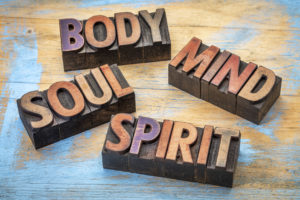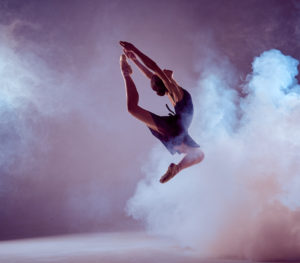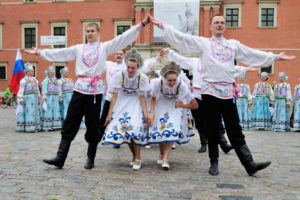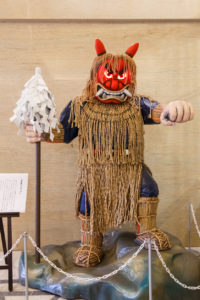 I launched the new MoveScape Center correspondence course, Mastering Rudolf Laban’s Mastery of Movement, with 19 reading companions on five continents (North and South America, Europe, Asia, and Australia). In early April we plunged into the first chapter.
I launched the new MoveScape Center correspondence course, Mastering Rudolf Laban’s Mastery of Movement, with 19 reading companions on five continents (North and South America, Europe, Asia, and Australia). In early April we plunged into the first chapter.
In his Introduction, Laban covers a dizzying array of topics, addressing animal and human movement; playing, dancing, and acting; humane effort; movement thinking; dance as a civilizing force; and more. Yet how he delineates virtuosity and artistry seems to have provoked the most heated responses from my fellow readers.
According to Laban the virtuoso employs the “mechanical perfection of speech and gesture” to mirror “man’s happiness, folly and misery.” By representing “the more external features of life,” this actor entertains, allowing the audience “to find comfort and relief from its workaday sorrows.”
On the other hand, there is another kind of actor, one who pays “little attention at first” to skillful physical representation. Rather this actor concentrates on mirroring “the hidden processes of the inner being.” As Laban sees it, a different kind of contact with the public results, one that he sees as being on a higher rung.
Not all my reading companions agree with Laban. And I’m delighted to see that a close reading can trigger reflection and critical response. The whole experience is making me think more about the relationship between virtuosity, artistry, and mastery. That’s what I like about Laban. Even if one doesn’t always understand what he means, he encourages thinking about the many dimensions of embodiment.

 Lamb affirmed that “effort goes with shape organically.” Yet careful study of an individual’s movement pattern will reveal an emphasis on effort more than shape, or vice versa. Lamb came to feel that this difference was fundamental and significant.
Lamb affirmed that “effort goes with shape organically.” Yet careful study of an individual’s movement pattern will reveal an emphasis on effort more than shape, or vice versa. Lamb came to feel that this difference was fundamental and significant.
 Rudolf Laban’s use of movement-based observational techniques anticipated the notion of “embodied cognition” by several decades. In his writings in the 1940s and 50s, Laban already had identified “mental efforts” — namely those of giving attention to what must be done, forming an intention to act, and finally taking decisive action — as stages of “inner preparation for outer action.”
Rudolf Laban’s use of movement-based observational techniques anticipated the notion of “embodied cognition” by several decades. In his writings in the 1940s and 50s, Laban already had identified “mental efforts” — namely those of giving attention to what must be done, forming an intention to act, and finally taking decisive action — as stages of “inner preparation for outer action.” Over the past six years, I have been part of an interdisciplinary research team testing Movement Pattern Analysis (MPA). The team consists of movement analysts, political scientists, and psychologists. We have been comparing the Movement Pattern Analysis profiles of a participant group of military officers with their performance on a set of decision-making tasks completed in a laboratory situation. Our aim is to assess how well their MPA profiles correlate with their decision-making behaviors in the lab.
Over the past six years, I have been part of an interdisciplinary research team testing Movement Pattern Analysis (MPA). The team consists of movement analysts, political scientists, and psychologists. We have been comparing the Movement Pattern Analysis profiles of a participant group of military officers with their performance on a set of decision-making tasks completed in a laboratory situation. Our aim is to assess how well their MPA profiles correlate with their decision-making behaviors in the lab. Movement Pattern Analysis is based on the premise that patterns of body movement reflect cognitive processes involved in making decisions. This premise usually is met with skepticism, for at the level of popular consciousness, mind and body are still separate entities.
Movement Pattern Analysis is based on the premise that patterns of body movement reflect cognitive processes involved in making decisions. This premise usually is met with skepticism, for at the level of popular consciousness, mind and body are still separate entities. Laban’s autobiography, A Life for Dance, is a curious book, but one that reveals a great deal about his creative vision and theatrical activities. As he notes in the letter to his publisher that opens the book:
Laban’s autobiography, A Life for Dance, is a curious book, but one that reveals a great deal about his creative vision and theatrical activities. As he notes in the letter to his publisher that opens the book:
 One challenging aspect of Laban’s Mastery of Movement is his description of many dramatic scenes meant to be embodied by the reader. These scenes involve multiple characters, various dramatic conflicts, and several changes in mood on the part of all the characters involved.
One challenging aspect of Laban’s Mastery of Movement is his description of many dramatic scenes meant to be embodied by the reader. These scenes involve multiple characters, various dramatic conflicts, and several changes in mood on the part of all the characters involved. In Mastery of Movement, Rudolf Laban invokes gods, goddesses, and demons in his discussions of the “chemistry of human effort.”
In Mastery of Movement, Rudolf Laban invokes gods, goddesses, and demons in his discussions of the “chemistry of human effort.”